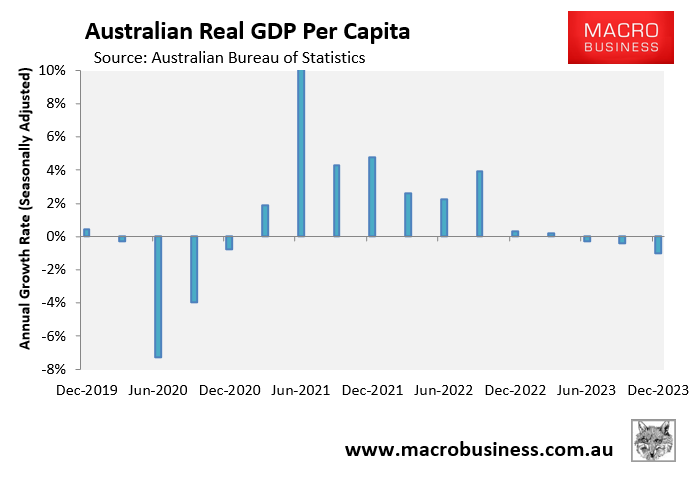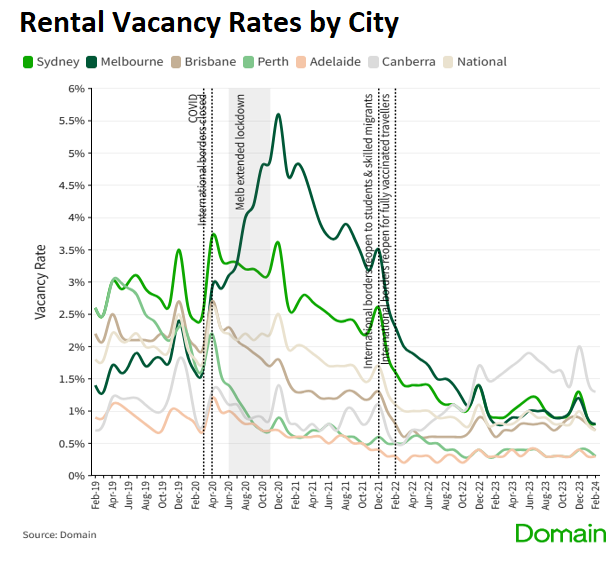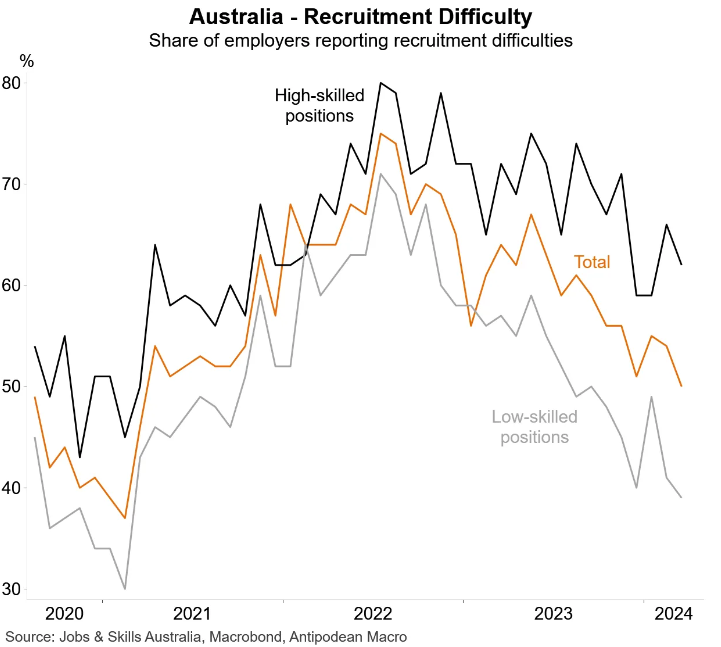According to the Department of Home Affairs’ latest temporary visa data, there were a record 713,144 international students in Australia as of the end of February 2024:

This is an increase of around 100,000 from the pre-pandemic peak.
With Australia’s rental crisis raging out of control, eight peak bodies in the international education sector have written to Home Affairs Minister Clare O’Neil, warning that measures to slow the flow of international students risk doing “lasting damage” to the economy, the balance of trade, and Australia’s reputation as a student-host country.
Their letter argued “that visa processing issues are leading to a number of unintended and damaging consequences”.
“These constraints risk pushing Australia towards a recession should they not be quickly improved”.
The letter also claimed that education exports reached a record $48 billion last year and that rising spending from an expanding number of students was the primary element that kept us out of recession last year.
Chief lobbyist Phil Honeywood from the International Education Association of Australia claimed the letter was “evidence of the incredible negative impact that the recent round of visa processing has had” and warned that “a similar situation impact on mid year student intakes may well force the closure of many long established quality education providers”.
To her credit, Home Affairs Minister Clare O’Neil hit back, arguing there are “significant issues with fraud, migrant worker exploitation, false asylum claims and other problematic migration outcomes”.
In a statement to The Australian in response to the letter, she said education was “a critically important export that over the last decade has been greatly undermined by dodgy providers engaging in a free for all. We will help providers work through these changes, but we will not shy away from making them”.
Let’s unpick the sector’s claims.
First, the $48 billion export figure is fake since it erroneously counts all expenditures by anybody on a student visa as an export, even if the money used to pay for this expenditure is earned in Australia.
This export figure is wildly exaggerated since most international students work while studying in Australia and use this money to pay their costs.
The falsity of the export number has also increased as Australia’s international student numbers have pivoted away from Chinese students who are wealthier and less likely to work to poorer students from South Asia.
Second, the notion that international students kept Australia out of a technical recession is irrelevant when per capita GDP fell by 1.0% in 2023:

Per capita outcomes are what matter, not headline growth.
Third, the surge in international students has helped drive rental vacancy rates to record lows, which is significantly harming younger and poorer Australians:

Finally, the tsunami of international students has driven up the supply of low-skilled workers and driven up youth unemployment, harming younger and poorer Australians:

The notion that universities are innocent victims is as laughable as the notion that Labor is massively tightening rules on the sector.
Labor has not capped student numbers. All it has done is belatedly implement some modest tightening of English-language requirements, give some rorting institutions a higher risk rating, impose a wet lettuce “genuine student test,” and make it harder to hop between visas.
The minor reforms were outlined last month by Home Affairs Minister Clare O’Neil and are mostly window dressing:
“English language requirements for student visas will be increased from IELTS 5.5 to 6.0 and for graduate visas from IELTS 6.0 to 6.5″…
“A new Genuine Student Test will be introduced to further crack down on international students looking to come to Australia primarily to work, rather than study”.
“This test will ask students to answer questions about their study intentions and their economic circumstances, with a declaration to be made that they understand what it means to be a genuine student”…
“The Government will be increasing the imposition of “no further stay” conditions on visitor visas”…
Meanwhile, Labor increased the number of hours students can work while studying to 24 hours a week, from 20 hours pre-pandemic. It has also signed two migration deals with India that provide easier access for Indian migrants and students.
I will believe that Labor is serious about cracking down on the international education sector if and when it:
- Raises financial barriers to entry (i.e., how much funds a student must have available before arriving in Australia).
- Significantly increases entrance requirements (e.g. English language proficiency).
- Raises pedagogical standards.
- Abolishes group assignments.
- Cuts the clear link between studying, working, and permanent residency.
- Requires universities to provide on-campus accommodation to international students in proportion to their intake.
The Albanese government must recognise that nearly two-thirds of Australians want lower immigration, with half wanting drastic cuts:

71% of Aussies also do not believe that Australia needs more people:

Labor would be wise to heed their concerns and not pander to the education lobby.

